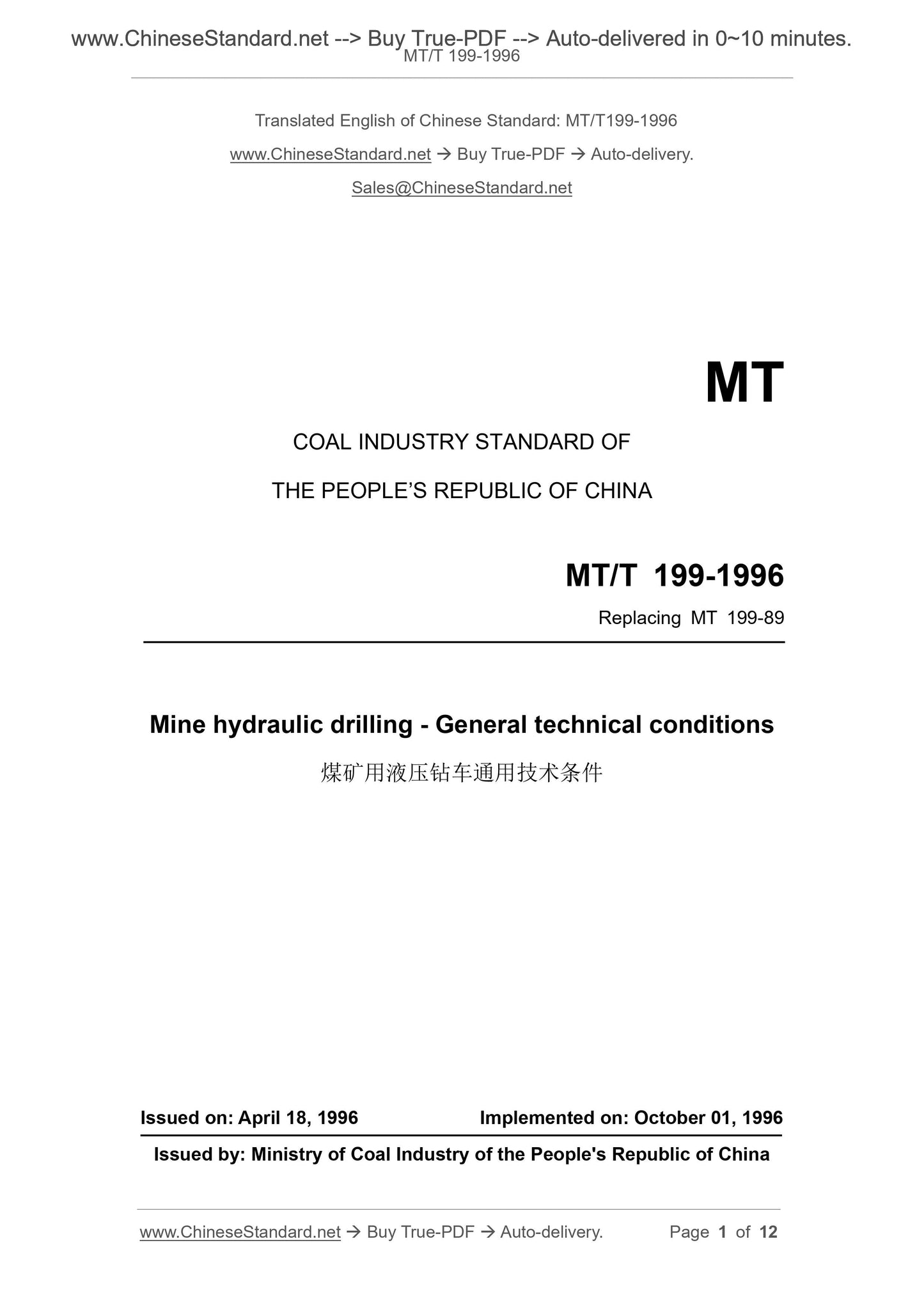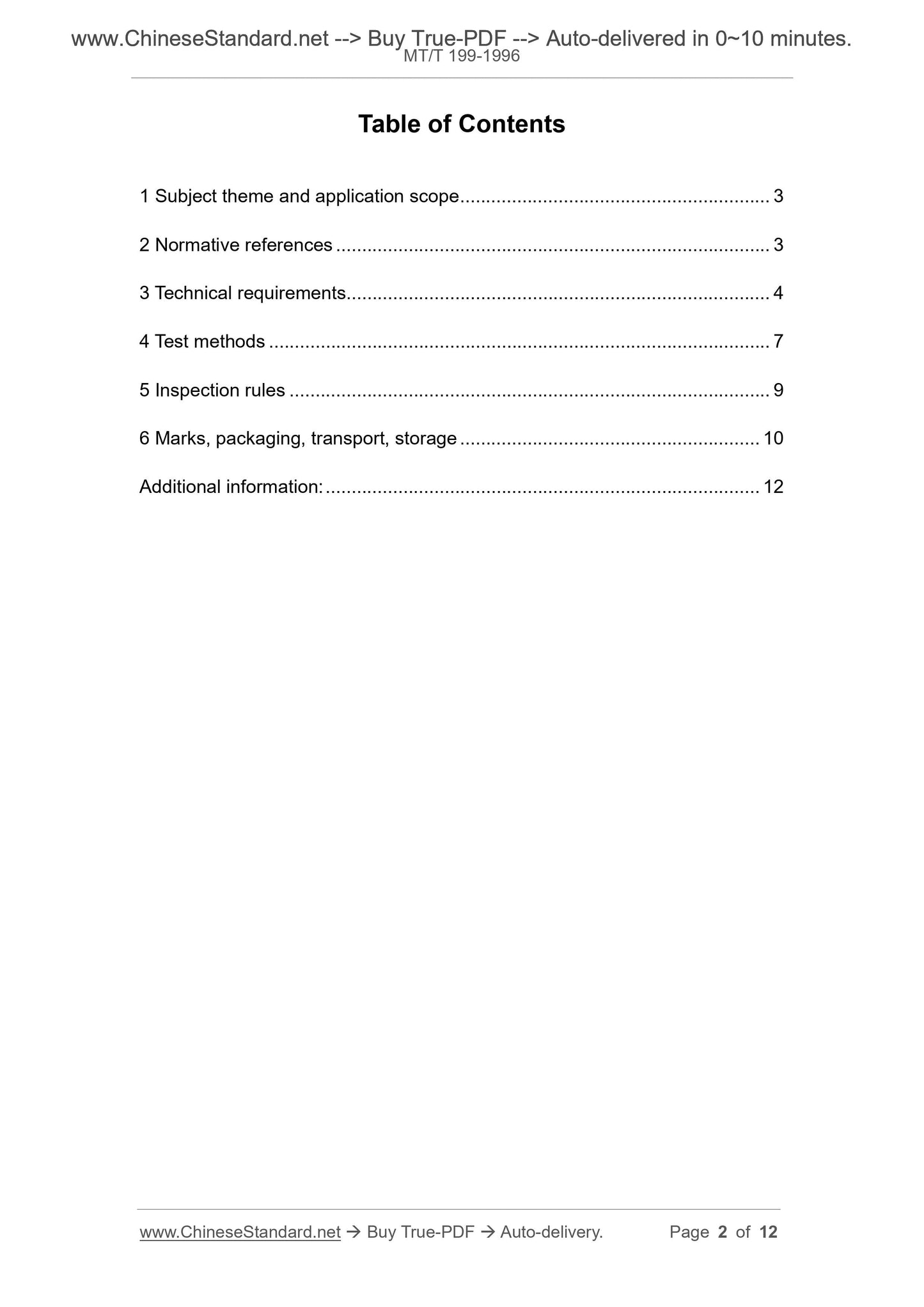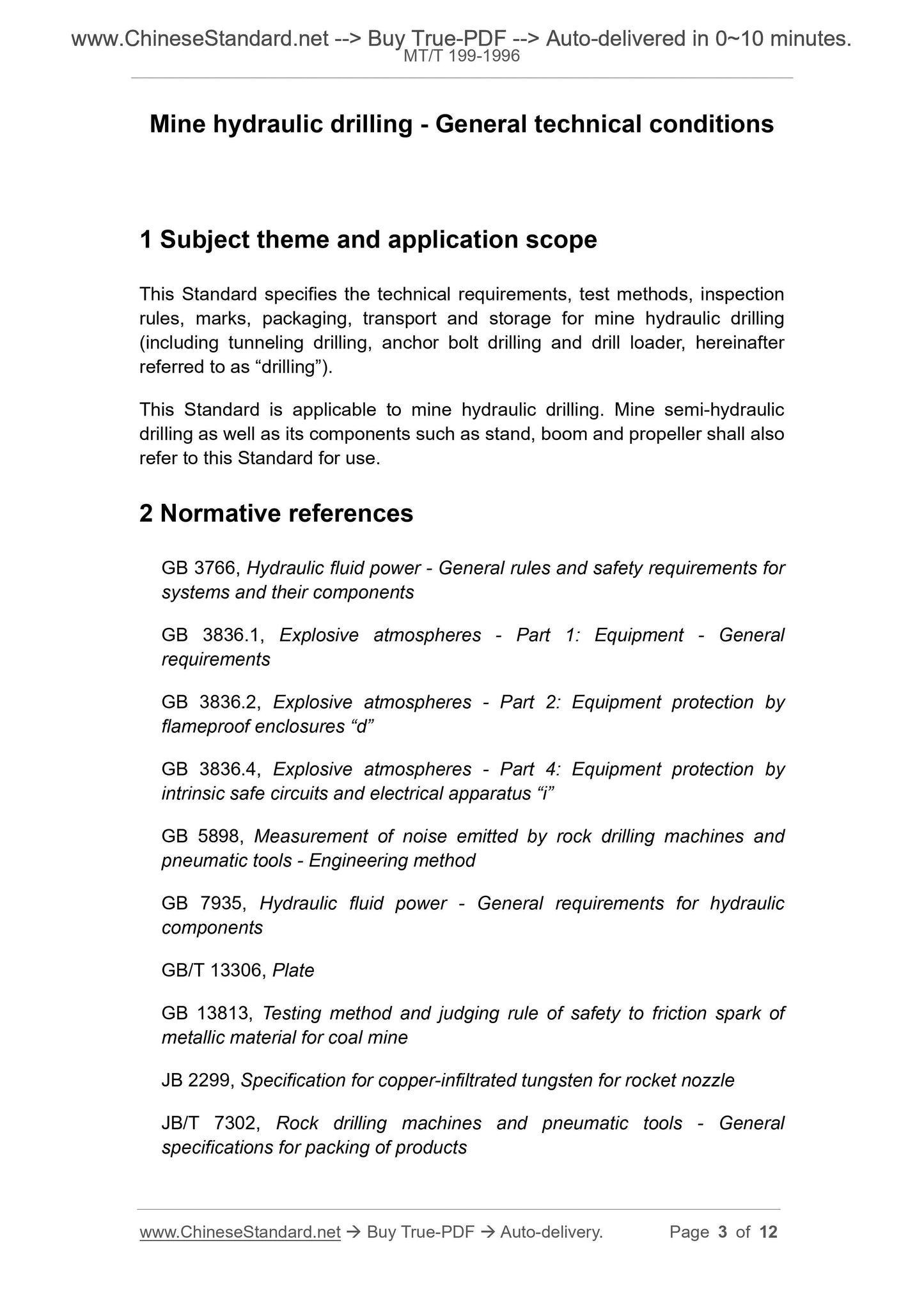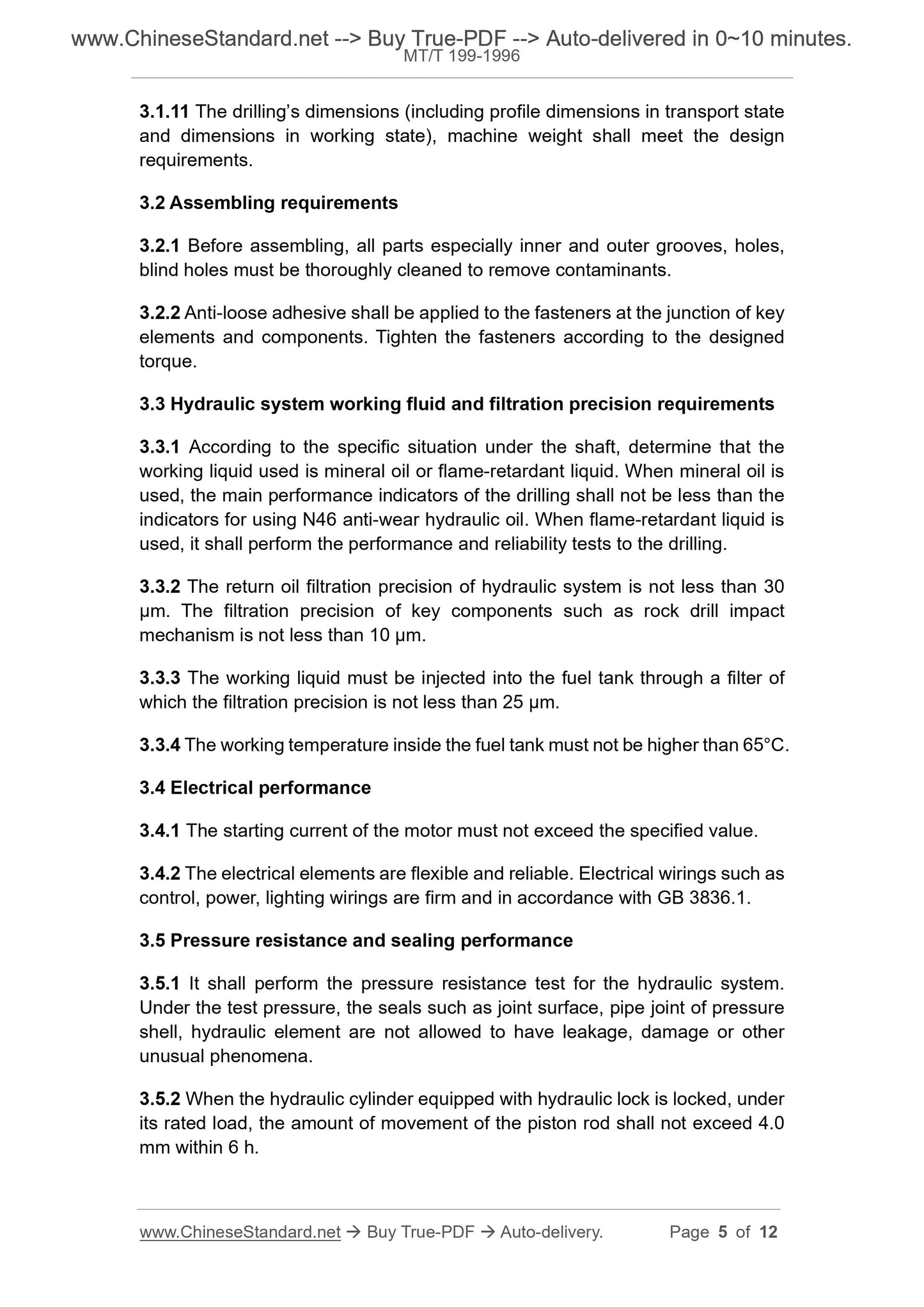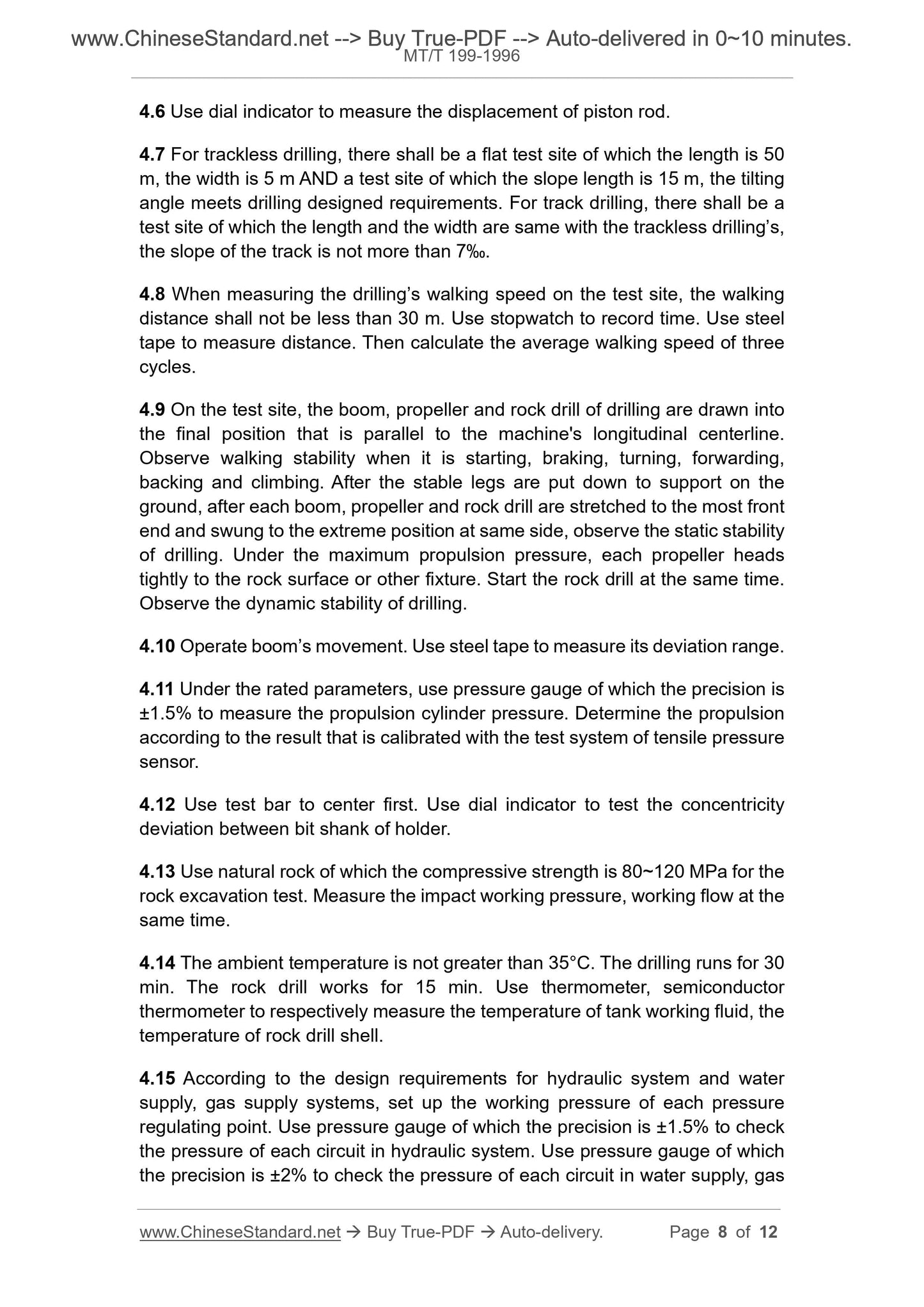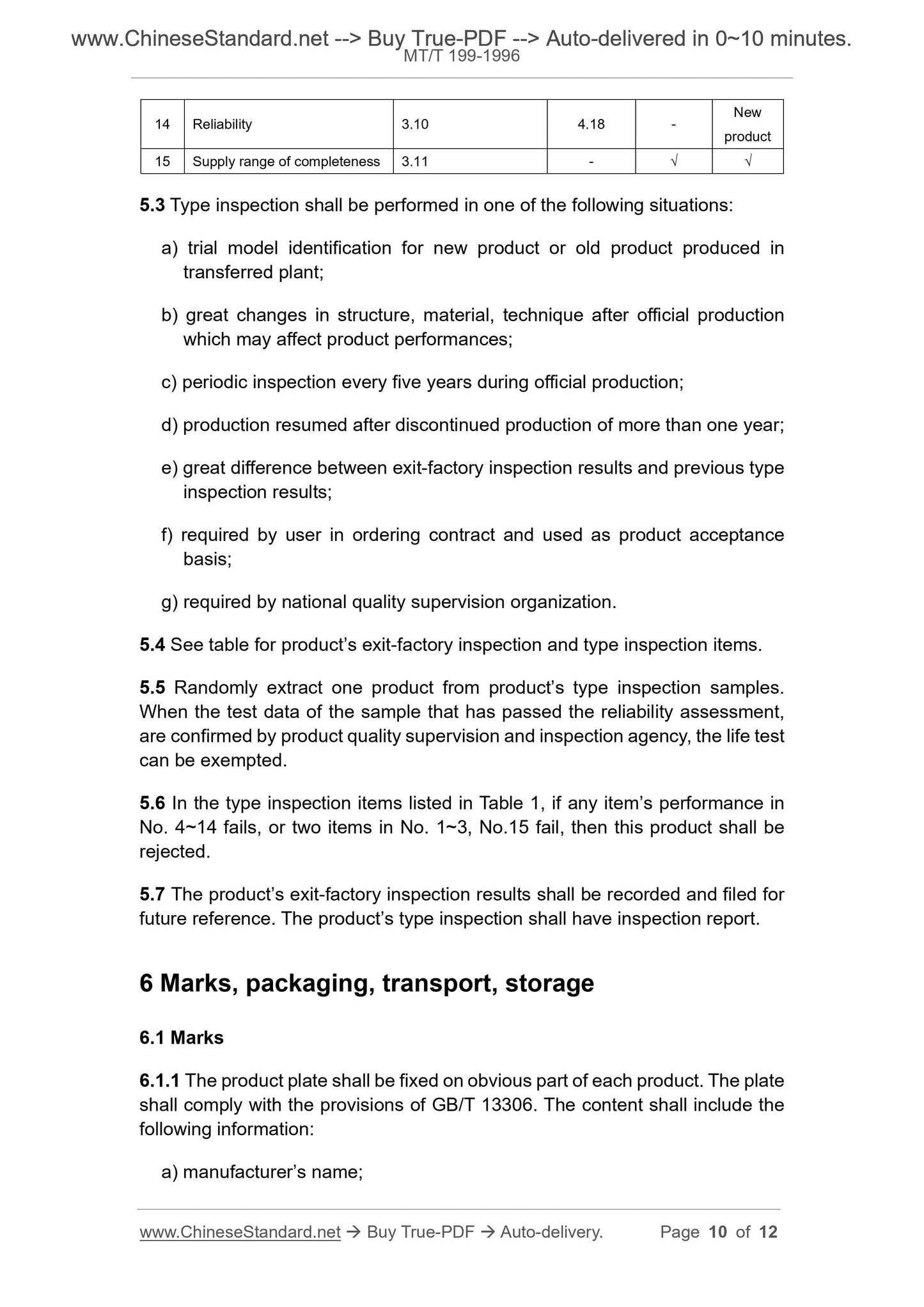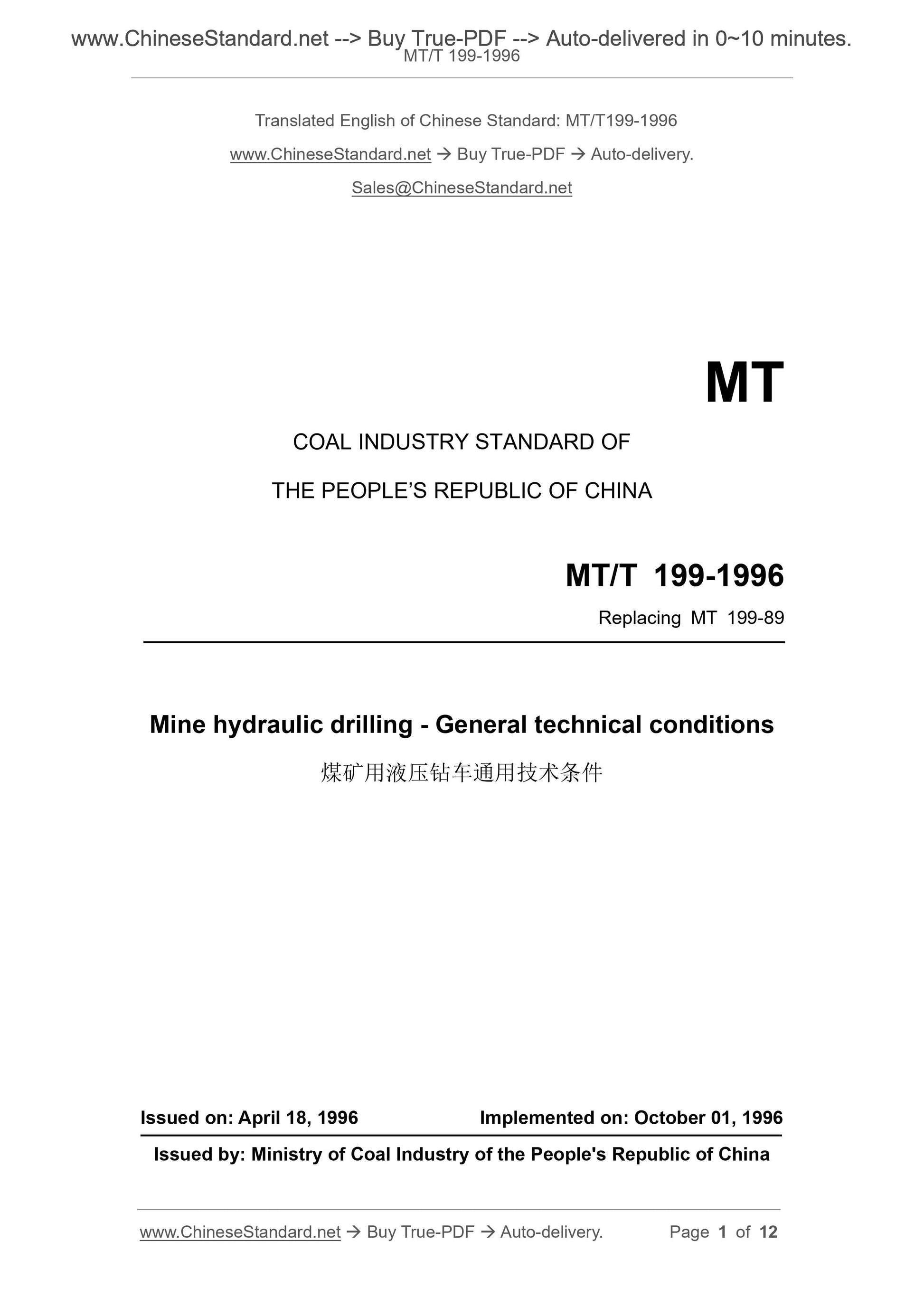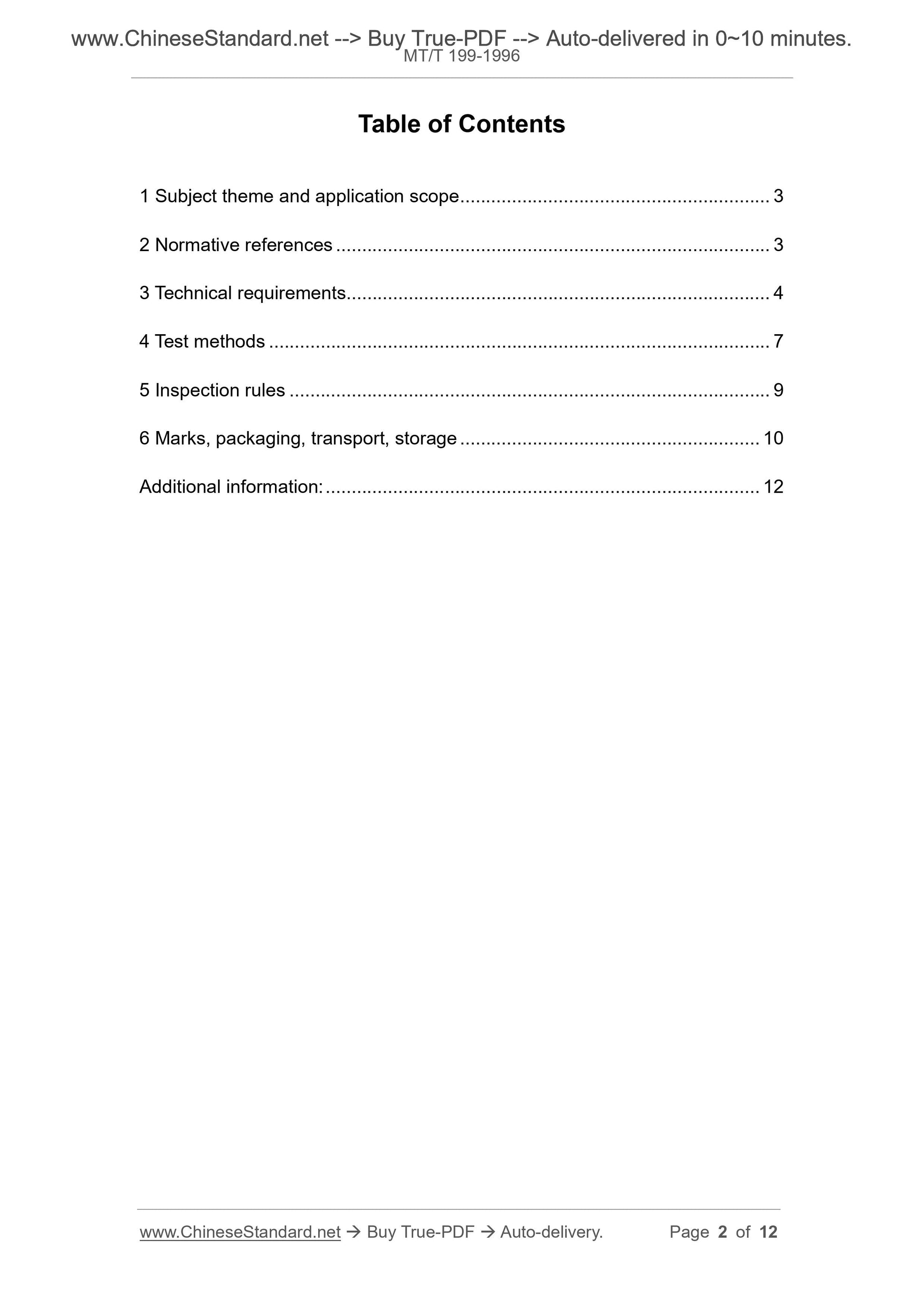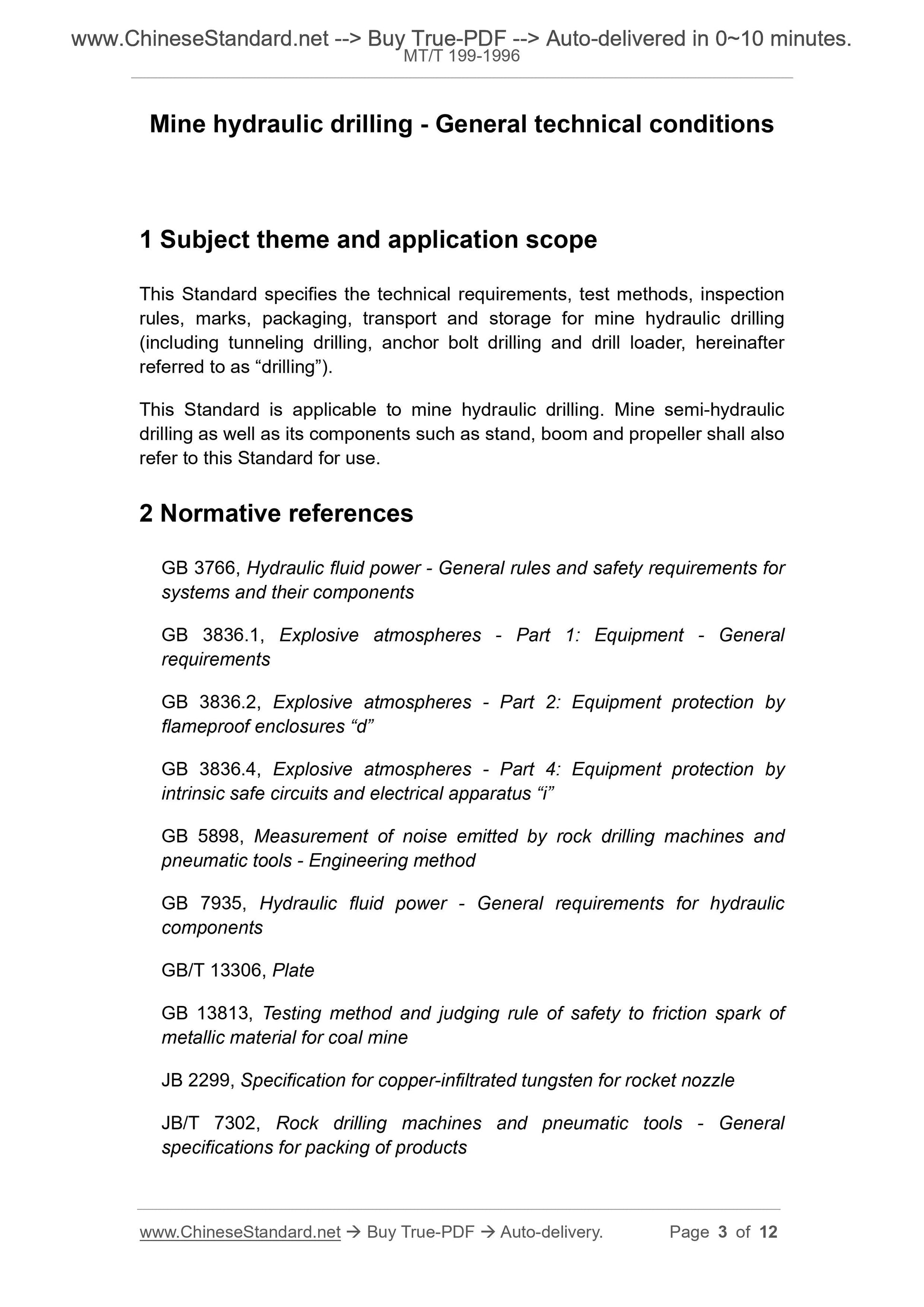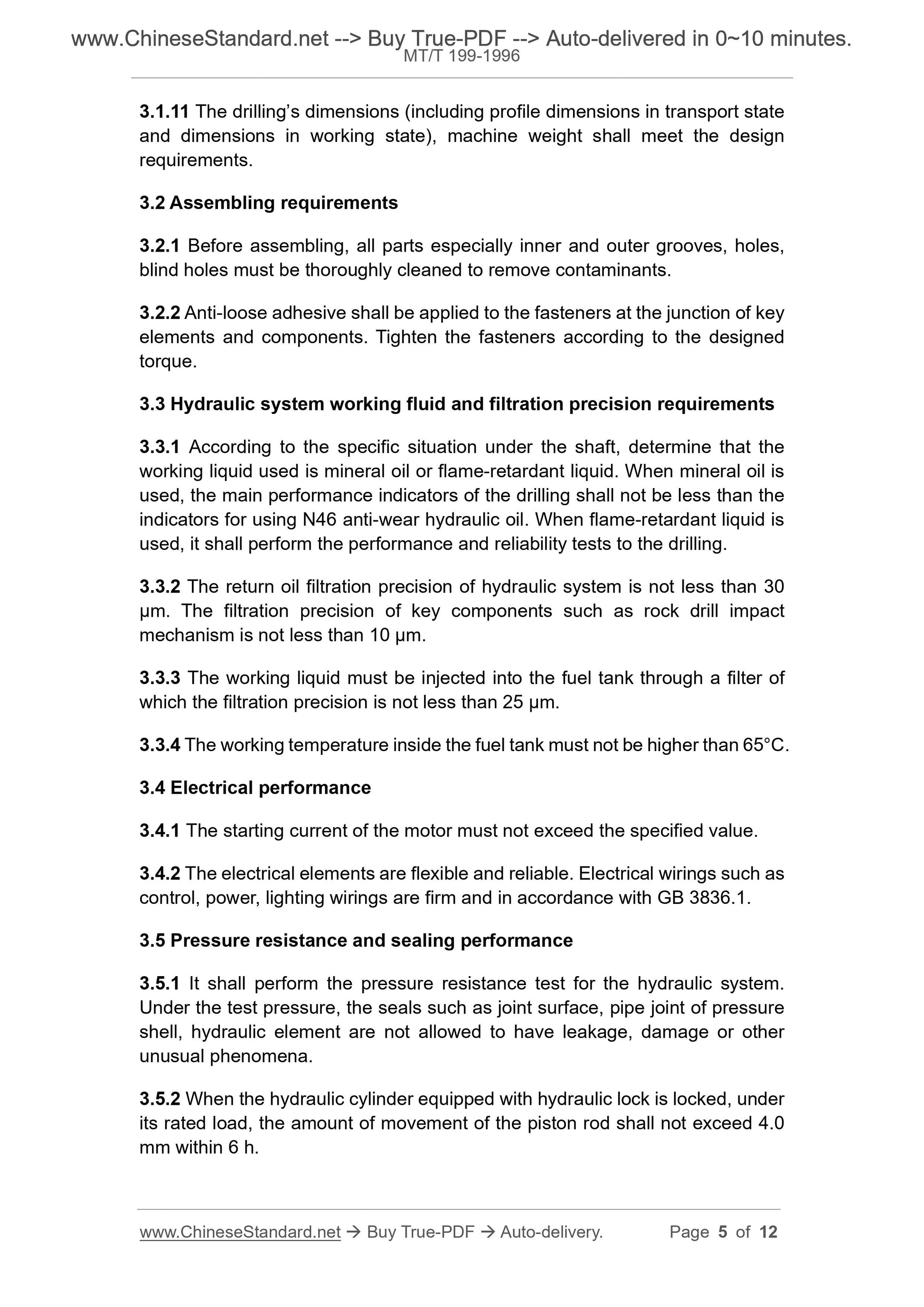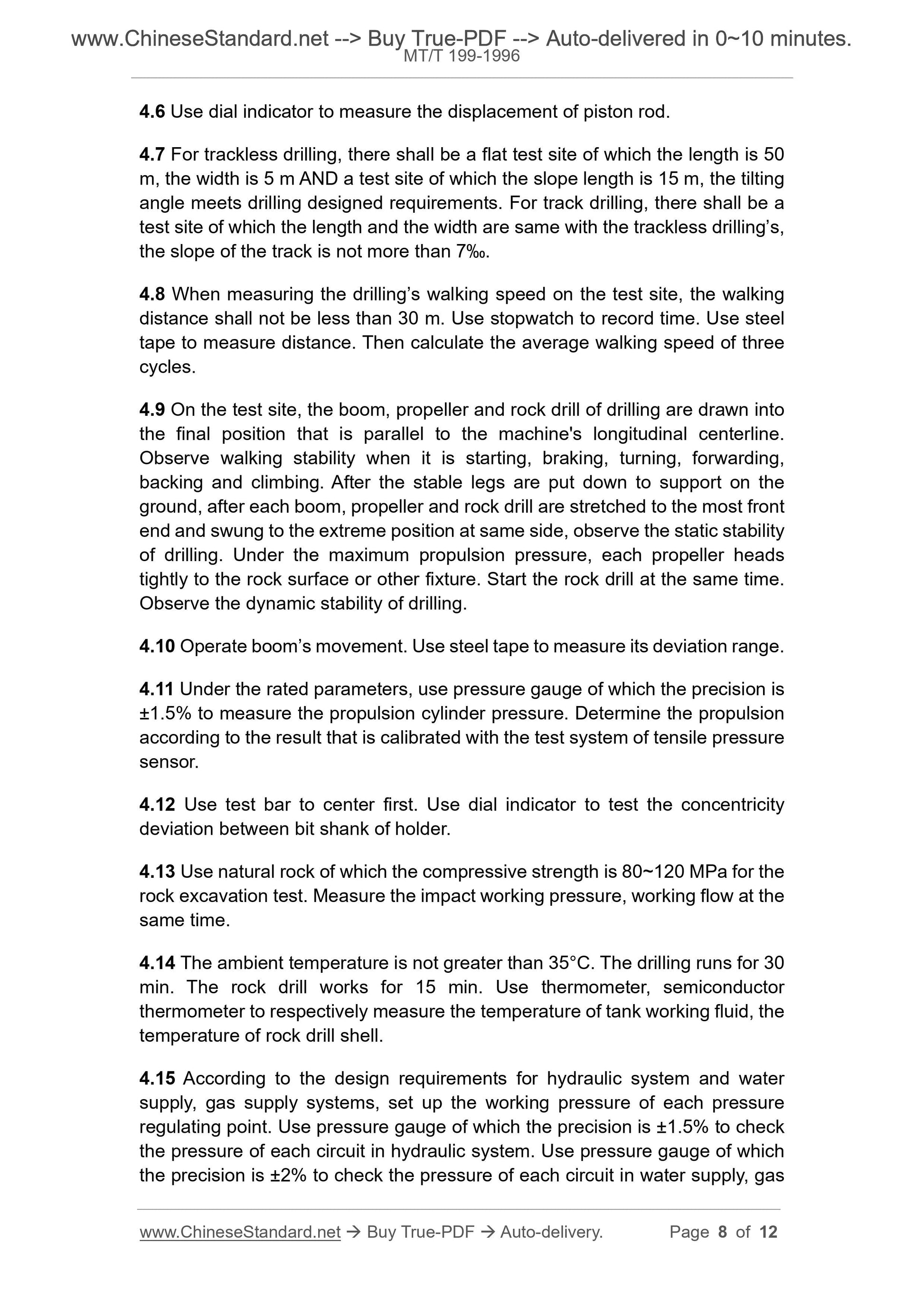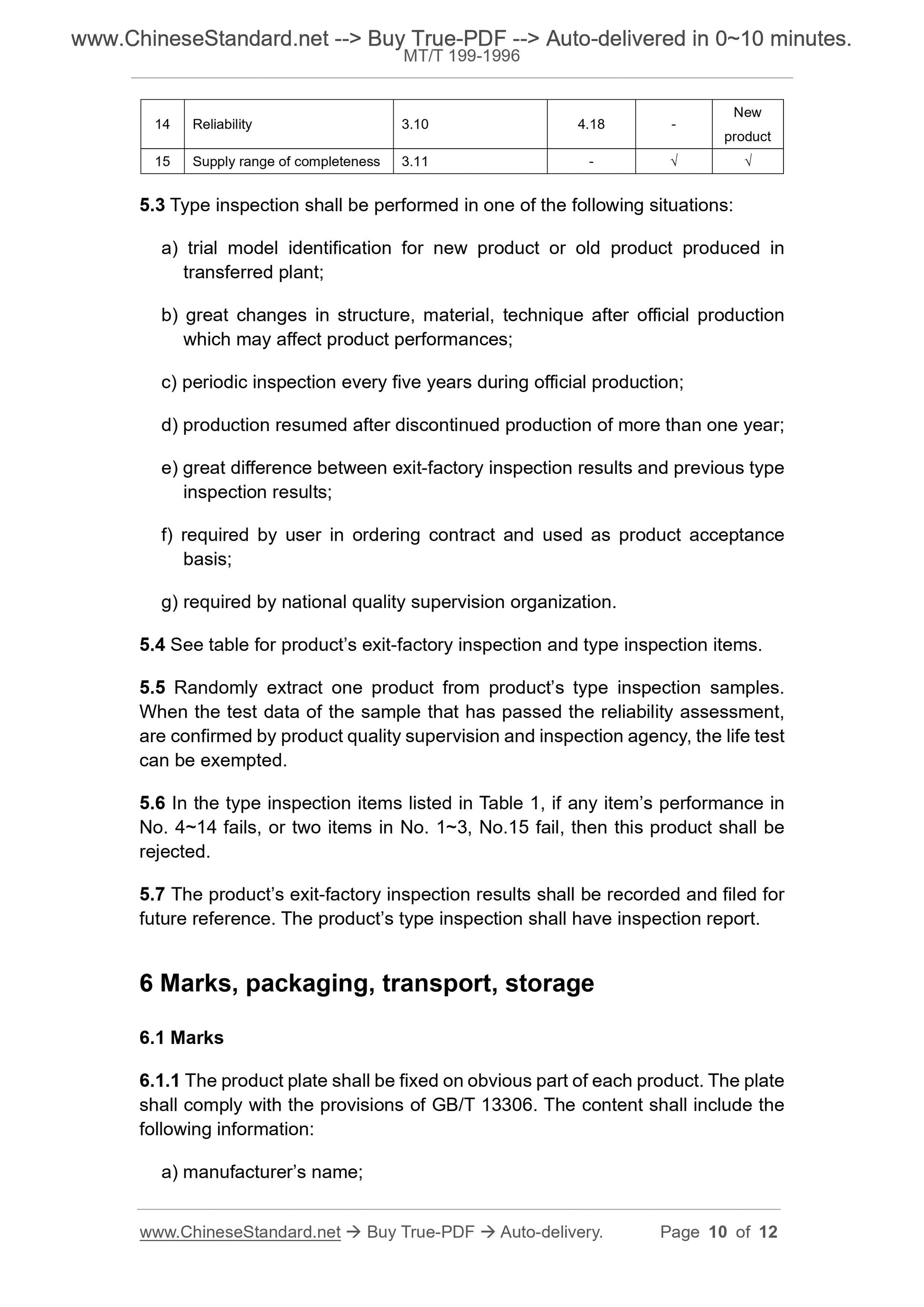1
/
of
6
www.ChineseStandard.us -- Field Test Asia Pte. Ltd.
MT/T 199-1996 English PDF (MT/T199-1996)
MT/T 199-1996 English PDF (MT/T199-1996)
Regular price
$130.00
Regular price
Sale price
$130.00
Unit price
/
per
Shipping calculated at checkout.
Couldn't load pickup availability
MT/T 199-1996: General specifications for hydraulic drill jumbos for coal mine
Delivery: 9 seconds. Download (and Email) true-PDF + Invoice.Get Quotation: Click MT/T 199-1996 (Self-service in 1-minute)
Newer / historical versions: MT/T 199-1996
Preview True-PDF
Scope
This Standard specifies the technical requirements, test methods, inspectionrules, marks, packaging, transport and storage for mine hydraulic drilling
(including tunneling drilling, anchor bolt drilling and drill loader, hereinafter
referred to as “drilling”).
This Standard is applicable to mine hydraulic drilling. Mine semi-hydraulic
drilling as well as its components such as stand, boom and propeller shall also
refer to this Standard for use.
Basic Data
| Standard ID | MT/T 199-1996 (MT/T199-1996) |
| Description (Translated English) | General specifications for hydraulic drill jumbos for coal mine |
| Sector / Industry | Coal Industry Standard (Recommended) |
| Classification of Chinese Standard | D98 |
| Word Count Estimation | 7,769 |
| Date of Issue | 4/18/1996 |
| Date of Implementation | 10/1/1996 |
| Older Standard (superseded by this standard) | MT 199-1989 |
| Quoted Standard | GB 3766; GB 3836.1; GB 3836.2; GB 3836.3; GB 3836.4; GB 5898; GB 7935; GB/T 13306; GB 13813; JB 2299; JB/T 7302; MT 198 |
| Summary | This standard specifies the use of coal Guang hydraulic drilling technology requirements, test methods, inspection rules, marking, packaging, transport and storage. This standard applies to coal mine hydraulic drilling. Mine Roller Drill half its bench, boom, propulsion components, etc. may also refer to the use. |
Share
